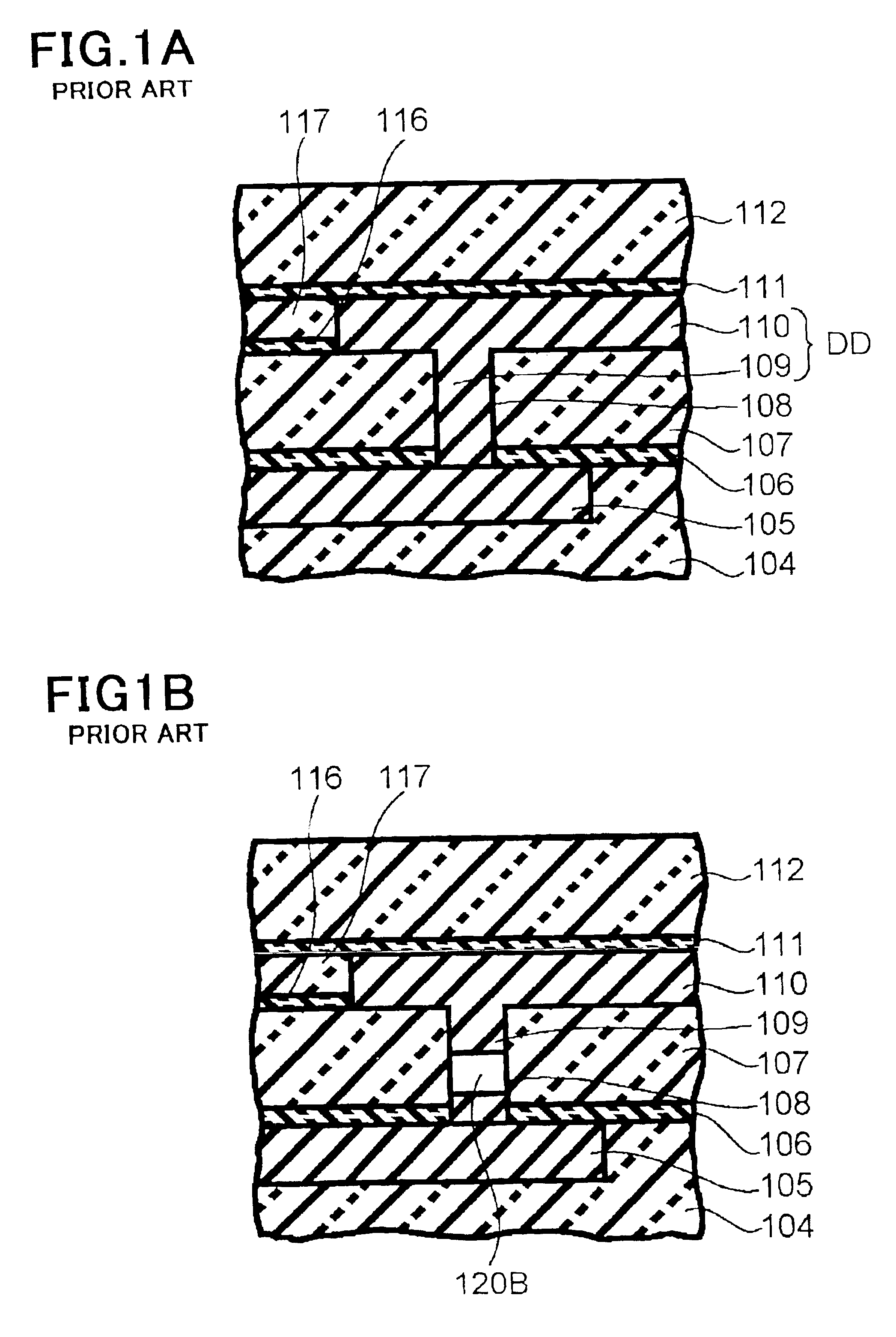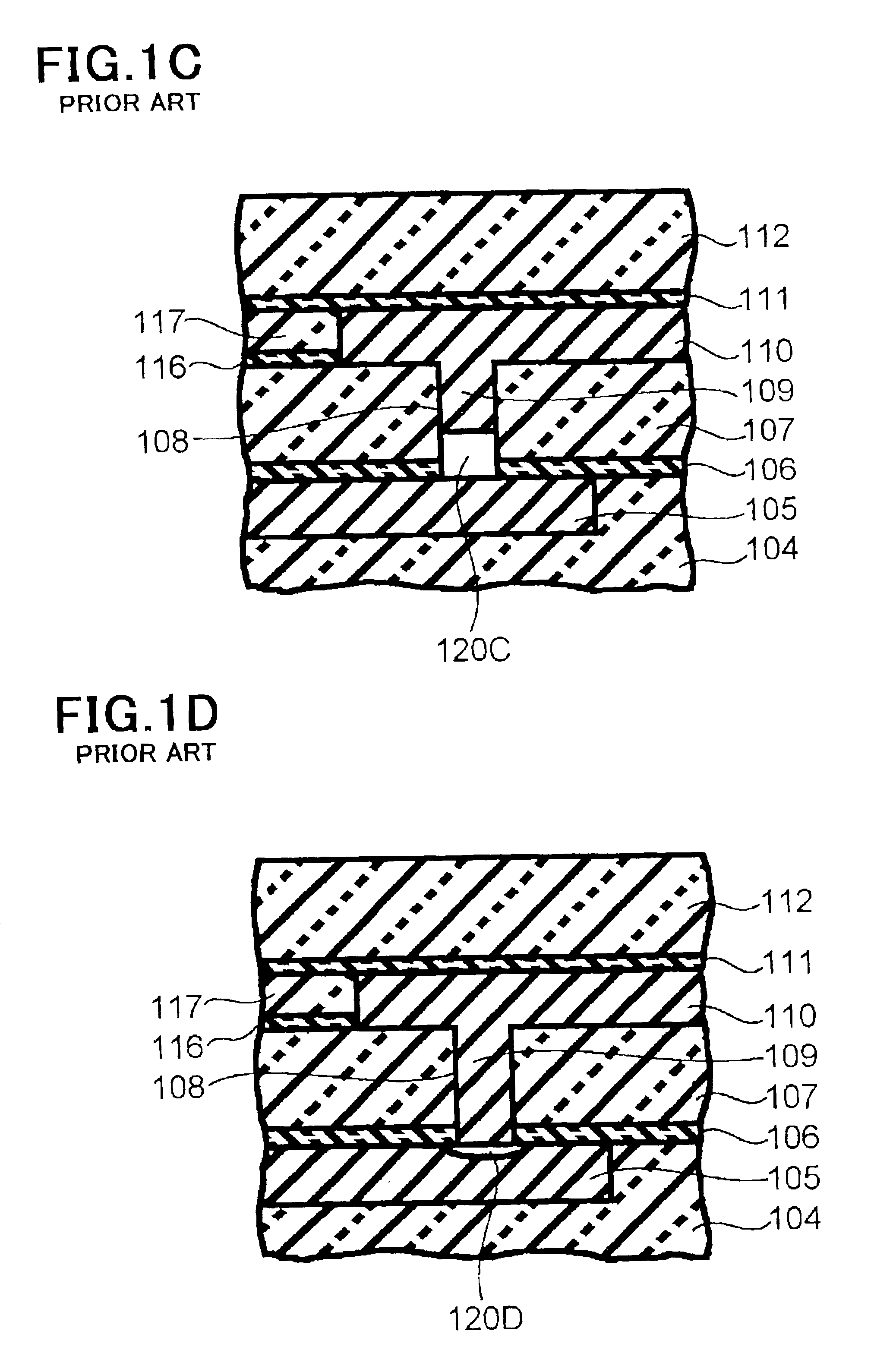Wiring structure in a semiconductor device
a wiring structure and semiconductor technology, applied in semiconductor devices, semiconductor/solid-state device details, electrical apparatus, etc., can solve the problems of corrosion inside the copper wiring, inability to pattern the copper wiring, and often inferior crystalline relative of the wiring layer, so as to avoid electrical insulation and avoid generation of voids.
- Summary
- Abstract
- Description
- Claims
- Application Information
AI Technical Summary
Benefits of technology
Problems solved by technology
Method used
Image
Examples
first embodiment
[First Embodiment]
[0108]FIG. 5 is an upper plan view of a wiring structure 10 in accordance with the first embodiment of the present invention, and FIG. 6 is a perspective view of the wiring structure 10 illustrated in FIG. 5.
[0109]For instance, the wiring structure 10 can be applied to a semiconductor device as a part of a planar wiring pattern.
[0110]The wiring structure 10 is comprised of a first wiring layer 11, and a second wiring layer 12 electrically and physically connected to the first wiring layer 11. The first and second wiring layers 11 and 12 are formed in a common layer, and both composed of copper (Cu).
[0111]As illustrated in FIGS. 5 and 6, the first wiring layer 11 has a length L1, a width W1 and a height H1, and the second wiring layer 12 has a length L2, a width W2 and a height H2. The width W2 of the second wiring layer 12 is greater than the width W1 of the first wiring layer 11 (W2>W1)
[0112]A volume V1 of the first wiring layer 11 and a volume V2 of the second wi...
second embodiment
[Second Embodiment]
[0154]FIGS. 13A and 13B illustrate a wiring structure 20 in accordance with the second embodiment of the present invention.
[0155]FIG. 13A is a plan view of the wiring structure 20, and FIG. 13B is a cross-sectional view taken along the line 12B—12B in FIG. 13A.
[0156]The wiring structure 20 is applicable to a multi-layered wiring structure in a semiconductor device, for instance.
[0157]The wiring structure 20 in accordance with the second embodiment is comprised of a first lower wiring layer 21a, a second lower wiring layer 21b, an upper wiring layer 22 arranged above and across the first and second lower wiring layers 21a and 21b, a first via-conductor 23a electrically connecting the first lower wiring layer 21a and the upper wiring layer 22 to each other, and a second via-conductor 23b electrically connecting the second lower wiring layer 21b and the upper wiring layer 22 to each other.
[0158]The first and second lower wiring layers 21a and 21b, the upper wiring la...
PUM
 Login to View More
Login to View More Abstract
Description
Claims
Application Information
 Login to View More
Login to View More - R&D
- Intellectual Property
- Life Sciences
- Materials
- Tech Scout
- Unparalleled Data Quality
- Higher Quality Content
- 60% Fewer Hallucinations
Browse by: Latest US Patents, China's latest patents, Technical Efficacy Thesaurus, Application Domain, Technology Topic, Popular Technical Reports.
© 2025 PatSnap. All rights reserved.Legal|Privacy policy|Modern Slavery Act Transparency Statement|Sitemap|About US| Contact US: help@patsnap.com



